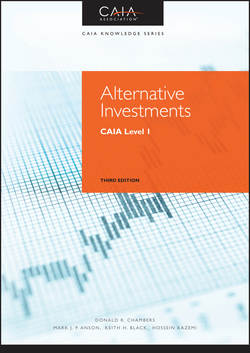Читать книгу Alternative Investments - Hossein Kazemi - Страница 50
На сайте Литреса книга снята с продажи.
PART One
Introduction to Alternative Investments
CHAPTER 3
Quantitative Foundations
3.5 Distribution of Cash Waterfall
3.5.1 Terminology of Waterfalls
ОглавлениеThe distribution of cash waterfalls has specialized terminology, and the terminology tends to differ between private equity and hedge funds. This section introduces most of the major terminology that is used in the remaining sections.
Cash inflows to a fund in excess of the costs of investment and the expenses of the fund represent the waterfall that is distributed to GPs and LPs. Excess revenue above expenses is referred to as cash flow or profit. In calculating profit, management fees are deducted, but any fees that are based on profitability are not deducted. (Management fees are usually deducted from the fund, regardless of profitability.)
Carried interest is synonymous with an incentive fee or a performance-based fee and is the portion of the profit paid to the GPs as compensation for their services, above and beyond management fees. Carried interest is typically up to 20 % of the profits of the fund and becomes payable once the LPs have achieved repayment of their original investment in the fund, plus any hurdle rate.
A hurdle rate specifies a return level that LPs must receive before GPs begin to receive incentive fees. When a fund has a hurdle rate, the first priority of cash profits is to distribute profits to the LPs until they have received a rate of return equal to the hurdle rate. Thus, the hurdle rate is the return threshold that a fund must return to the fund's investors, in addition to the repayment of their initial commitment, before the fund manager becomes entitled to incentive fees. The term preferred return is often used synonymously with hurdle rate – a return level that LPs must receive before GPs begin to receive incentive fees.
A catch-up provision permits the fund manager to receive a large share of profits once the hurdle rate of return has been achieved and passed. A catch-up provision gives the fund manager a chance to earn incentive fees on all profits, not just the profits in excess of the hurdle rate. A catch-up provision contains a catch-up rate, which is the percentage of the profits used to catch up the incentive fee once the hurdle is met. A full catch-up rate is 100 %. To be effective, the catch-up rate must exceed the rate of carried interest.
Vesting is the process of granting full ownership of conferred rights, such as incentive fees. Rights that have not yet been vested may not be sold or traded by the recipient and may be subject to forfeiture. Vesting is a driver of incentives. Vesting can be pro rata over the investment period, over the entire term of the fund, or somewhere in between, such as on an annual basis.
A clawback clause, clawback provision, or clawback option is designed to return incentive fees to LPs when early profits are followed by subsequent losses. A clawback provision requires the GP to return cash to the LPs to the extent that the GP has received more than the agreed profit split. A GP clawback option ensures that if a fund experiences strong performance early in its life and weaker performance at the end, the LPs get back any incentive fees until their capital contributions, expenses, and any preferred return promised in the partnership agreement have been paid.
